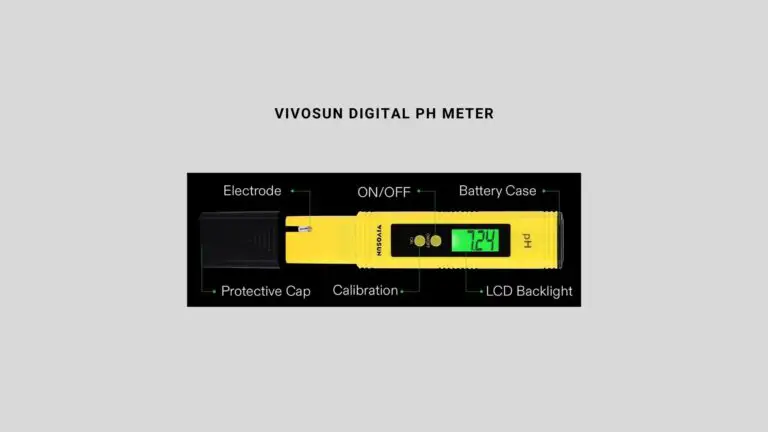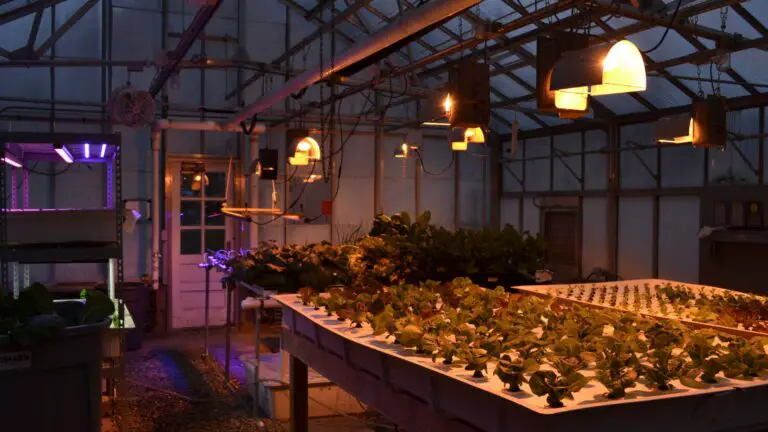The 4 Different Types of Supports in Hydroponic Gardening
Disclosure: Your purchases through our links may earn us a small commission, supporting our site’s ability to provide valuable information to our readers. Rest assured, it won’t impact your price. Thank you for your support.
You can use hydroponic systems to grow various plants, from vegetables, herbs, fruits, and flowers. The plant you’re growing will determine the type of stake or trellis support you need. In hydroponics, supports are necessary to keep the plants from falling over. Different types of support can be used, and the type of support you use will depend on your hydroponic system. For example, tomato plants will need sturdier support than cucumber plants.
What Are the Benefits of Using Supports in Hydroponics?
Hydroponic supports have many benefits. They help,
- Save space
- Increase yield
- Reduce pests and diseases
- Help improve air circulation
- Allow the roots to get more oxygen
Related:
The Top 10 Benefits of Hydroponics: Everyone Needs to Know!
Why You Should Consider Outdoor Hydroponic Growing
10 Benefits of Growing Plants with Nutrient Film Technique
What Are the Different Types of Supports for Hydroponic Plants?
The most common types of supports are stakes, trellises, nets, and clips. Let’s look at the different types of supports in more detail:
1. Stakes
Stakes are the most common type of support used in hydroponics. They are typically made of plastic, wood, or metal and can be placed in the soil or reservoir. Garden stakes are typically used to support plants that grow upright, such as tomatoes or pole beans. The stakes should be placed so that they are evenly spaced and secure.
2. Trellises
Trellises are horizontal structures that the plants can climb up. They can be made out of metal, wood, or plastic. Trellises are taller and are used to support plants that grow horizontally. Trellises are typically used in vine crops such as cucumbers, tomatoes, and peppers. When using a trellis, it is important to ensure that it is securely fastened to the ground or the sides of the container so that it does not tip over when the plants get heavy.
3. Nets
Nets can be made out of nylon or polyester and are typically used in vine crops such as cucumbers, tomatoes, and peppers. Nets are also horizontal structures that the plants can climb up. Nets should be securely fastened to the ground or sides of the container so they do not tip over when the plants get heavy.
Trellis nets help keep small fruits from falling through the holes. They’re often used to support heavy fruits like grapes or watermelons. Trellis nets can be attached to either wooden or metal posts.
4. Clips
Clips are small devices that attach the plant stems to a support structure. Clips are made from metal or plastic and are typically used in small-leaved crops such as lettuce and herbs. Clips should be firmly attached to the stem so they do not fall off when the plant gets heavy.
Click here the following links, if you planned to buy one or more of these supports. stakes, trellises, nets, and clips.
What Are Support Materials Available for Purchase?
The type of material you choose will depend on the look you are going for and the weight of the plant you support. If you consider stakes and trellis support, you have many options for the material. The most common materials are plastic, wood, and metal. You can also find support made out of bamboo or other natural materials.
1. Wooden Support
Wooden support is the most common type used in hydroponics. They’re inexpensive and easy to find at any garden center or nursery. When choosing wooden support, make sure to select ones that are made from rot-resistant wood, such as cedar or redwood. You’ll also want to ensure the support can provide adequate support for your plants.
2. Plastic Support
Plastic support is another common type used in hydroponics. They’re often less expensive than wooden support and are also lighter in weight, making them easier to handle. However, plastic support can break more easily than wooden ones, so they might not be the best option if you have heavy plants or your hydroponic system is located in an area with high winds.
3. Metal Support
The metal support is the strongest type available, which makes them ideal for supporting heavy plants. However, metal support can be more expensive than other types, and they can also rust over time if they’re not properly coated with rust-resistant paint or sealer.
4. Bamboo Support
Bamboo support is a natural material that’s becoming more popular in hydroponics. Bamboo is strong and durable yet lightweight, making it easy to handle. Bamboo is also a sustainable material, which is an essential consideration for many gardeners.
5. Other Natural Materials
Other natural materials that you can use for support include cornstalks, fallen tree branches, and twine. These materials are often inexpensive but might not be as strong or durable as other options.
When choosing a support material, you’ll need to consider the weight of the plant, the wind conditions in your area, and the look you are going for.
Which Types of Supports Are Best for Which Plants?
The best type of support for your plants will depend on the below three.
- Type of hydroponic system
- Type of plants you are growing
- The available space
- If you are growing tomatoes in a small space, you may want to use clips or nets.
- If you are growing cucumbers in a large space, you may want to use a trellis.
- Nets are best suited for vining crops such as cucumbers, tomatoes, and peppers.
- Clips work well for small-leaved crops such as lettuce and herbs.
Below is a chart showing which types of supports are best suited for different types of plants:
| Types of Plants | Best Type of Support |
|---|---|
| Vining Crops (Cucumbers, Tomatoes, Peppers) | Trellis or Net |
| Small-Leaved Crops (Lettuce, Herbs) | Clip |
What Are Some Tips for Using Hydroponic Supports?
- It is important to ensure they are evenly spaced and securely fastened.
- It is also important to ensure that the support does not block the light from reaching the leaves.
- If you are using a trellis, make sure the mesh is small enough so that the plants cannot get tangled in it.
- Make sure the supports are made from materials that will not rust or break easily.
- When choosing a support material, you’ll need to consider the weight of the plant, the wind conditions in your area, and the look you are going for.
Conclusion
As you can see, there are various types of supports that you can use in hydroponics. The type of support you use will depend on your hydroponic system and the type of plant you are growing. No matter what support you use, it is important to ensure that it is firmly attached to the ground or sides of the container so that it does not tip over when the plants get heavy. Also, consider the size and weight of your plants when selecting a stake or trellis support to ensure that it can provide adequate support.
Thank you for reading!
Also, read,
How to Make Kratky Method More Efficient and Effective
13 Nutrients Required for Hydroponic Plants
How to Set Up a Nutrient Film Technique – NFT Hydroponics?
Is a Growing Medium Necessary for Hydroponic Systems?





